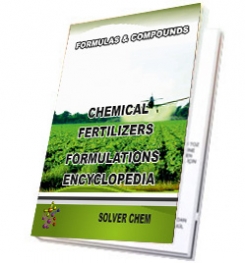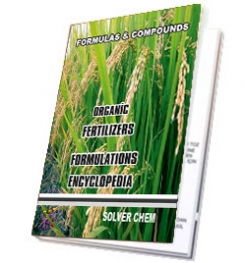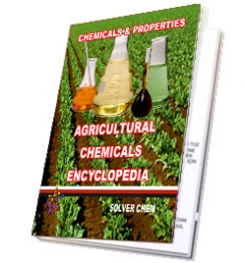Black Sigatoka (sometimes referred to as black leaf streak) is a fungal leaf spot disease of banana caused by the organism Mycosphaerella fijiensis. Not present in mainland Australia, black Sigatoka is one of the most devastating leaf diseases of banana in many countries around the world. Severely infected leaves can die, significantly reducing fruit yield, and causing mixed and premature ripening of bunches.
Leaf symptoms of black Sigatoka are very similar to those produced by yellow Sigatoka (caused byMycosphaerella musicola), a closely related fungus that is present in Australia. Eumusae leaf spot (caused by Mycosphaerella eumusae) symptoms are also very similar to those caused by both black and yellow Sigatoka. Eumusae leaf spot is not known to be present in Australia.
Overview
| What it looks like |
Black Sigatoka leaf spots begin as small reddish-brown flecks (1mm) on the lower leaf surface. These gradually increase in size to form dark linear streaks (4-12mm) parallel to the leaf veins that are visible on both leaf surfaces. The streaks expand becoming elliptical spots often with a distinctive yellow halo. As the lesions mature further, they become sunken and the centre turns grey. In susceptible cultivars, high levels of disease can cause large areas of the leaf surface to die. |
|---|---|
| Symptoms |
Black Sigatoka symptoms can be difficult to distinguish from yellow Sigatoka (caused byMycosphaerella musicola). With black Sigatoka, early leaf streaks are reddish to rusty-brown, longer and broader than yellow Sigatoka and most evident on the lower leaf surface. In comparison, early streaks of yellow Sigatoka are yellow-green, narrower and shorter, and more prominent on the upper leaf surface. Both diseases can be present on the one plant. Black Sigatoka can also be confused with eumusae leaf spot (caused by Mycosphaerella eumusae). Laboratory testing is required to reliably distinguish these diseases. |
| Spread |
Infection is favoured by hot, wet and windy weather. The disease can be spread by the movement of infected plant material, or by fungal spores produced on leaf lesions or within dead leaf material on the plant, or in the form of trash. Black Sigatoka spores can be dispersed by the wind or by water splash. The unfurling and youngest fully expanded leaves on large plants and suckers are the most susceptible to infection. As the leaves mature, they become resistant to infection. There is also evidence to suggest that the disease can be spread to other areas by contaminated fruit shipments. |
any liquid and solid organic fertilizer,
ORGANIC
FERTILIZERS
FORMULATIONS
ENCYCLOPEDİA
is enough.
This encyclopedia has many formulations about organic soil conditioner,humic acid productions,compositions,fulvic acid manufacturing,organic fertilizers,animal manure,amino acid organic fertilizers, organomineral powder fertilizers,organomineral liquid fertilizers productions,liquid root growth fertilizers formulas,granular root growth fertilizers,seaweed organic fertilizers,wermicompost fertilizers formulations,gel organic fertilizers,organomineral gel fertilizers manufacturing and any organic fertilizers etc.
All organic fertilizers in the encyclopedia are producible easily.You need no help and no technıcal support. The encyclopedia is enough to produce organic fertilizers itself.
ORGANIC
FERTILIZERS
FORMULATIONS
ENCYCLOPEDIA
is written clear and understandable.
RELATED TAGS: What is organic fertilizer,preparation of organic soil conditioner, liquid organic fertilizer manufacturing,animal manure manufacturing, manufacturing proces of animal manure,chicken manure,efficiency of humic acid in soil,effect of humic acid in plants, advantages of humic acid in agriculture, types of animal manure,seaweed fertilizer manufacturing process,production of liquid seaweed fertilizers, what is organic compost, preparation of organic compost,how to use organic compost,making organic compost, using of seaweed fertilizer,properties of seaweed organic fertilizers how to make liquid organic fertilizers, making organic compost,types of organic compost,manufacturing process of organic compost, how to make organic compost fertilizers, production of organic fertilizers,manufacturing process solid humic acid, formulation of humic acid,value of humic acid,manufacturing process of fulvic acid,how to produce humic acid,what is leoardite,where to use leonardite,types of leonardite,properties of leonardite,analyzes of leonardite,specification of leonardite, values of leonardite, what is leonardite humate,what is potassium humate, liquid humic acid preparation,powder humic acid production, granular soil conditioner manufacturing process, powder soil conditioner making,formulation of organic soil conditioner, making powder humic acid,humic acid production, composition of organic fertilizers,how to use organic fertilizers,why to use organic fertilizer,types of organic fertilizer,benefits of organic fertilizers,wermicompost fertilizers making, powder organic fertilizers,how to use organic fertilizers, making wermicompost fertilizer, formulation of seaweed fertilizers, amino acid fertilizer production,granular organic fertilizer,amino acid organic fertilizer manufacturing, properties of organic fertilizers, analyzes of organic fertilizer, specification of organic fertilizers, where to use organic fertilizers, what is soil amendments, humic acid making, how to make powder humic acid, manufacturing process of fulvic acid, herbal fulvic acid making, liquid humic acid process, formulation of humic acid,organic fertilizers for plants, organic fertilizers in agriculture, how to produce organic fertilizers, animal manure manufacturing process, herbal fertilizers, what is organic fertilizer compost, what is organic agriculture, how to make organic agriculture, advantages of organic fertilizers, effects of organic fertilizer, results of organic fertilizers, indications of organic fertilizers, symptoms of organic fertilizers, preparation of organic fertilizers, calculation of organic fertilizers, compounds of organic fertilizers,composition of liquid organic fertilizers, fertilization of organic fertilizers,why to use organic fertilizers.what is humate, types of humates,benefit of humate,potassium humate manufacturing process.,using powder soil conditioner, properties of granular soil conditioner,what is pellet organic soil conditioner.what is amino acid fertilizer, how to use organic amino acid fertilizsers,making amino acid fertilizers,formulation of amino acid fertilizers,manufacturing process of amino acid fertilizers, what is organic compost, where to use organic compost, types of organic compost in plants,benefits of organic compost in soil, preparation of organic compost in agriculture.


E - BOOKS AND HARD BOOKS

HOW TO BUY
AGRICULTURE ENCYCLOPEDIAS AND VIDEOS
|
|
|
|
|
|
|
|
|
